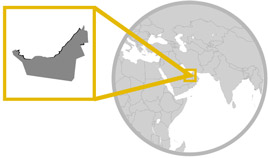Religion
In 1991, the new Colombian Constitution guaranteed the freedom of all faiths through Acts 13 and 19, but due to history the country is mainly Catholic with around 82% of all Colombian inhabitants following the faith. A further 13% or so are Protestant Christians, making around 95% of the population Christian in nature.
However, many other faiths exist in the country with 2% being Atheist and 3% following other faiths including Seventh-Day Adventism (1%), The Church of Jesus Christ of Latter-Day Saints (0.8%), Jehovah’s Witnesses (0.7%), the Baha’i Faith (0.4%), Judaism (0.05%), Buddhism (0.05%), Islam (0.02%) and Taoism (0.01%). Some native beliefs do also exist but these are largely isolated communities.
Museums, Galleries & Architecture
Architecture in Colombia is more often than not derived from European Colonial buildings, especially Spanish Andalusian and are very frequently gothic in nature as is visible in Las Lajas Cathedral, Rafael Uribe Uribe Palace of Culture and in many areas of Bogota and Medellin. However, recent years have also seen many Neoclassical buildings, those of the Mudejar variety and even some Art Deco structures such as the Romelio Martinez Stadium and the Garcia Building in Barranquilla.
 Clothing, Dress Style & Etiquette
Clothing, Dress Style & Etiquette
Today, most Colombians wear typical western-style clothing with those in the city centres veering towards dark-coloured suits and those in the suburbs preferring loose shirt, skirts and trousers. However, traditionally the clothing worn varied greatly and traditional outfits can still be seen during national festivals such as the Carnaval de Barranquilla.
Women often wear La Pollera Colora (a brightly coloured skirt with ruffles and lace around the neck and knee lines) and Men will wear something similar with more of an emphasis on fitted trousers and shirts (with the aforementioned ruffles and lace at the openings). Common Colombian clothing pieces worn by both genders include the Sombrero (a wide-brimmed hat) and the Ruana (a poncho-like cape).
Literature, Poetry, Music & Dance
Colombian music sees a unique blend of European Spanish Guitar with percussion instruments and large gaita flutes seen in the indigenous population but also sees its percussion structure and dance forms coming from Africa. These influences have seen many unique genres rise to fame including the Cumbria, Joropo, Vallenato, Salsa and Bambuco. Additionally, rock, pop and classical music are also widely popular and have seen many artists find international stardom including Shakira (Shakira Isabel Mebarak Ripoll) and Juanes (Juan Esteban Aristizabal Vasquez).
Calendar & Events
Throughout the year, Colombia has over a hundred festivals which differ greatly from region to region and town to town, however, across the country a fair few days are celebrated across the board.
In January, Ano Nuevo (New Years’ Day) and Dia de los Reyes Magos (the Epiphany) are celebrated on the 1
st and the 6
th respectively. Then March sees Dia de San Jose (Saint Joseph’s Day) on the 19
th and one or both of Jueves Santo (Maundy Thursday) and Viernes Santo (Good Friday) in late March or Early April.
May 1
st sees Primero de Mayo (Labour Day) celebrated, and then the Ascension del Senor (Ascension of Jesus) celebrated 39 days after Easter Sunday, which lands some time usually in May. June sees Corpus Christi (Body of Christ) and the Sagrado Corazon (Sacred Heart) celebrated 60 and 68 days after Easter Sunday, respectively, as well as the days of San Pedro y San Pablo (Saint Peter and Saint Paul) celebrated simultaneously on the 29
th.
On July 20
th, the Declaration of Independence is celebrated with another public holiday, followed by the Battle of Boyaca on August 7
th and La Asuncion (Assumption of Mary) on August 15
th.
The last quarter of the year sees the Dia de la Raza (Colombus Day) celebrated on the 12
th of October, followed by All Saints’ Day on November 1
st, the Independence of Cartagena on the 11
th of November and La Inmaculada Concepcion (Immaculate Conception) on the 8
th of December. Finally, the year is topped off with Christmas Day, or as it’s called in Colombia, Navidad, on the 25
th of December.


